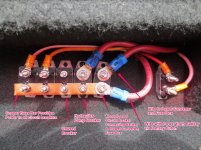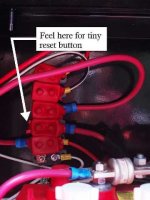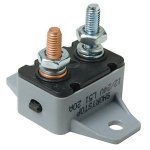dasmoeturhead
Well-known member
Went to leave or CG yesterday after 30 days, and once we disconnected the shore power, nothing worked, except the hydraulic stabilizers. No lights, no water pump, nothing.
Once we got to our new spot, and connected shore power everything is working now. Not sure what's going on. Can I use a portable battery charger to charge the batteries with the shore power on? If so would I connect it to the post and negative terminal that is on the outside of the battery box? The terminal looks like it's comments to both the batteries.
I will Check the batteries 1st, but I'm not sure if I'm missing something. Gotta get on the road tomorrow.
Once we got to our new spot, and connected shore power everything is working now. Not sure what's going on. Can I use a portable battery charger to charge the batteries with the shore power on? If so would I connect it to the post and negative terminal that is on the outside of the battery box? The terminal looks like it's comments to both the batteries.
I will Check the batteries 1st, but I'm not sure if I'm missing something. Gotta get on the road tomorrow.



